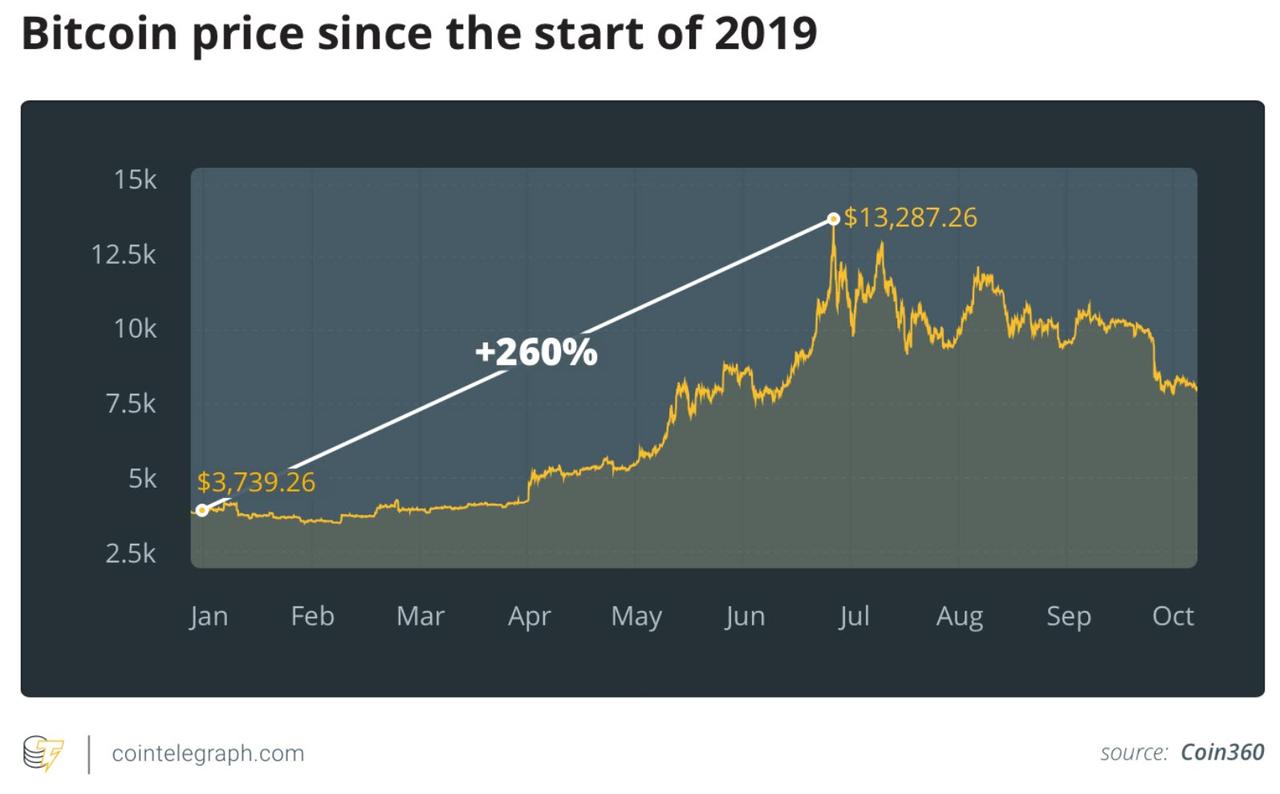The Leftist Cult Vs. The Trump Cult: Similarities And Differences
Authored by Brandon Smith via Alt-Market.com,
Political demagoguery is a valuable and effective weapon in the arsenal of the establishment elites. As long as there is a wide ideological division between groups in society, biases and desires can be tapped and manipulated. This allows those in power to direct vast portions of the public down one path or another. When fear of an enemy and the drive to “win” become more important than truth and evidence, the population has tied its own puppet strings and handed them over to the spin doctors.
This is why the false Left/Right paradigm has been so useful to the establishment for so long. Anytime the public starts to wake up to the web of control, all the elites have to do is push one or both sides of the political spectrum towards extremism and let the people rage at each other instead of picking up their torches and pitchforks and tearing down the oligarchy. This method of division and diversion keeps the masses occupied and feeling as though they are accomplishing something while actually accomplishing nothing.
As Carroll Quigley, globalist insider and mentor to Bill Clinton, admitted in his book 'Tragedy And Hope':
“The argument that the two parties should represent opposed ideals and policies, one, perhaps, of the Right and the other of the Left, is a foolish idea acceptable only to doctrinaire and academic thinkers. Instead, the two parties should be almost identical, so that the American people can “throw the rascals out” at any election without leading to any profound or extensive shifts in policy....Then it should be possible to replace it, every four years if necessary, by the other party which will be none of these things but will still pursue, with new vigor, approximately the same basic policies.”
The false Left/Right tactic has become more and more exposed in the past decade to the wider public, and so the elites had to change their methods to adapt to the growing awareness. Conservatives in particular have started to leave the plantation, and something had to be done to drag them back. The liberty movement has become a force in western life with tens of millions of members. It is an unpredictable element that the establishment needs to lock down and redirect if they ever hope to achieve their goal of a “new world order”.
The elites have used two tandem strategies in this effort:
First, they pushed leftist indoctrination towards full bore cultism.
Second, they have attempted to co-opt the leadership of conservatives and the liberty movement using a political puppet figure in order to bottleneck our energy and momentum.
Leftist culture has become increasingly erratic and unhinged (even more so than usual), informed by elements of a new social justice fanaticism; a kind of religious fervor where faith in ideological gatekeepers is more important than facts. The majority of the left, while not necessarily part of this “woke” religion, is still influenced by SJW rhetoric. Delusional notions of “patriarchy” and “inherent racism” and “inherent sexism” are woven into the Democrat mindset today. They see oppression everywhere, and victim group status has become the social currency they use to acclimate to a fantasy world where big government and entitlements are the solutions to all the world's ills.
The conservative side of civilization doesn't participate in the oppression fantasies of the left. We don't even speak the same language, as the left's very vocabulary has shifted into an academic babble-language they simply made up to describe social dynamics that don't exist and gender politics that are biologically and scientifically absurd. Reconciling with leftists in any meaningful way has become nearly impossible, and fear of their fanaticism is causing conservatives to assume that whatever these people hate, must be good.
Enter Donald Trump, a kind of artificially created focal point machine, a figure that is designed to absorb liberty movement talking points and then regurgitate them in an alphabet soup puddle on Twitter. This rhetoric is relatively effective in that many conservatives recognize parts of the soup and find comfort that Trump “must be on their side”.
I have outlined in numerous articles Trump's dubious background and behavior. To summarize, we often hear lip service from Trump on anti-globalism and anti-elitism, even though it is an undeniable fact that he has saturated his cabinet with globalists and elitists.
We heard anti-banker talking points from Trump during his campaign, even though Trump has a longstanding relationship to the Rothschild family and works side-by-side with Rothschild and Goldman Sachs bankers in the White House. We heard lots of anti-Federal Reserve discussion from Trump and observations that the current economy is an explosive bubble engineered by them; yet he now openly demands that the Fed inflate the bubble further while he takes full credit for the fake stock market rally. We also heard many promises that US troops would be coming home and the long wars in the Middle East would end for America; this has not happened and likely will not happen as tensions with Iran continue to grow.
In other words, Trump is a skin job. A robot. A false conservative and false prophet of the liberty movement. He tells us what we want to hear while his actions say something entirely different. Yet, a lot of conservatives still listen to him, because they despise the collectivist religion of the left, they desperately want mainstream recognition and representation, and because they want to believe that there is a white knight out there in Washington defending their interests and their future.
The establishment understands these desires and exploits them. They understand that the more extreme the left becomes, the more tempted conservatives will be to jump blindly on the Trump bandwagon.
Mainstream media outlets like CNN have taken to referring to Trump's base as a “cult” recently, which of course is the pot calling the kettle black; but it does not mean that the accusation is wrong. Trump's base is indeed acting more and more like a cult, but primarily in reaction to the cultism of leftists. The crazier the left gets, the more Trump becomes a folk hero to the right. The more the media promotes fabricated Russiagate nonsense or Ukrainian conspiracy narratives, the more conservatives assume that the establishment is “trying to take down” Trump.
It is rather rudimentary reverse psychology – If the establishment media attacks Trump, then he must be "anti-establishment". If the leftists hate Trump, then he must be good for conservatives. Nothing could be further from the truth, but if anyone points this out they will be immediately attacked as disinformation agents and purveyors of CNN talking points.
A common argument in defense of Trump is to ignore his associations and behavior entirely and focus on the prevailing circus surrounding him instead. People state indignantly that:
“Trump is under attack! They are trying to impeach him! How can he be working with the globalists if they are trying to get rid of him...?”
I would point out that there is a usefulness to political theater that goes far beyond trying to remove a president from office. Again, the media viciously attacked Trump during his election campaign, but if one understands that public trust in the mainstream media has collapsed in the past ten years, then one also understands that media attacks on Trump would only cause more people to like him and vote for him. The question then needs to be asked: Does the establishment understand this inverse relationship in public psychology? Or, did they completely overlook it?
I seriously doubt they are overlooking it.
If this is the case, then the frothing leftist rage against Trump, while partially real, is also 4th Generation warfare designed to trick conservatives into developing their own cult-like fantasy that Trump is our fearless leader fighting the good fight even though his presidency is tightly intertwined with global elitists. The impeachment itself comes at a time when a large portion of the liberty movement is waking up to the Trump con game and is questioning many of his activities and associations.
The establishment has put a lot of effort into creating the Trump versus Leftist circus, and they really hate the idea that a number of people are refusing to pick a side. For them, there is nothing worse than free thinkers who organize their own side separate from the false paradigm.
The impeachment, like Russiagate, is not designed to get Trump out of office. It is a Hail Mary attempt to pull liberty minded conservatives back into the Trump fold; to keep us predictable and under control. It is also designed to keep leftists feeling justified in their insanity. Remember, the crazier the left acts, the more fearful and malleable conservatives become.
The establishment likes Trump right where he is, and he will not be going anywhere, at least not until he has completely served his purpose. Whether that will be in the next year, or in another four years, it's hard to say at this time. Obviously, the elites have to keep the left/right sideshow going at full volume until they are done using Trump as a distraction. They will “attack” him as often as needed to create the illusion that he is anti-establishment, and Trump will continue to play along to please his masters, many of them standing over his shoulder everyday in the White House.
The Leftist Cult and the Trump Cult are similar in their refusal to accept facts and reality, as well as their ability to double and triple down on delusions that are consistently debunked.
I have witnessed people on the Trump-train dismiss every blatant piece of evidence of Trump's collusion with globalists on the basis that he is "keeping his enemies close". I have seen them ignore his support for Red Flag gun laws, his refusal to pull US forces out of Syria, Iraq, Afghanistan and Yemen, his hostility towards Iran, his support for totalitarian governments like Saudi Arabia, etc. They call it "4D chess" and simply move on. I have seen them shrug off endless data showing economic decline and proclaim instead an "economic boom". I have seen them completely absorbed and distracted by the trade war and China while forgetting all about the banking elites that engineer most of the calamity in our society.
They act this way because they are afraid. The political left frightens them, they are searching for a hero to save them, and they are willing to overlook almost any skeleton in Trump's closet in order to make their fantasy version of him real. But, the leftists are nothing more than a symptom - They are useful idiots, not the source of the disease. And, Trump is not the hero conservatives are looking for anyway. In terms of the liberty movement, Trump is irrelevant. He's a footnote. The real work is being done by millions of activists breaking through decades of propaganda and exposing the truth.
The difference between the Leftist Cult and the Trump Cult is mostly intent: Leftists double and triple down on their lies because they are infatuated with collective power and they see the truth as an obstacle to the "greater good". The Trump cult ignores facts and evidence on Trump because they are hyperfocused on collective defense. Leftists are seeking to micromanage the thoughts and behavior of the world while conservatives are seeking to solidify enough political protection to ensure they are left alone. The Leftist Cult wants to burn everything to the ground, erase history and rebuild the world in their image. The Trump Cult is trying to keep the last structures of American heritage alive; they have simply put their faith in the wrong champion.
The sad reality is, leftists and conservatives are likely far too alien to each other now to ever come to a diplomatic solution. The division in society is very real; it's the division at the top that's Kabuki theater. The liberty movement is the key to everything, as we are the constant target of establishment 4th Gen propaganda. If we didn't matter, then the elites would not be spending so much time, money and energy trying to keep us in line. They need us to buy into the theater, otherwise we become an unknown element, a third party, a time bomb that could explode unexpectedly on them at any given moment.
* * *
If you would like to support the work that Alt-Market does while also receiving content on advanced tactics for defeating the globalist agenda, subscribe to our exclusive newsletter The Wild Bunch Dispatch. Learn more about it HERE.
https://ift.tt/2N0rMvR
from ZeroHedge News https://ift.tt/2N0rMvR
via IFTTT

















